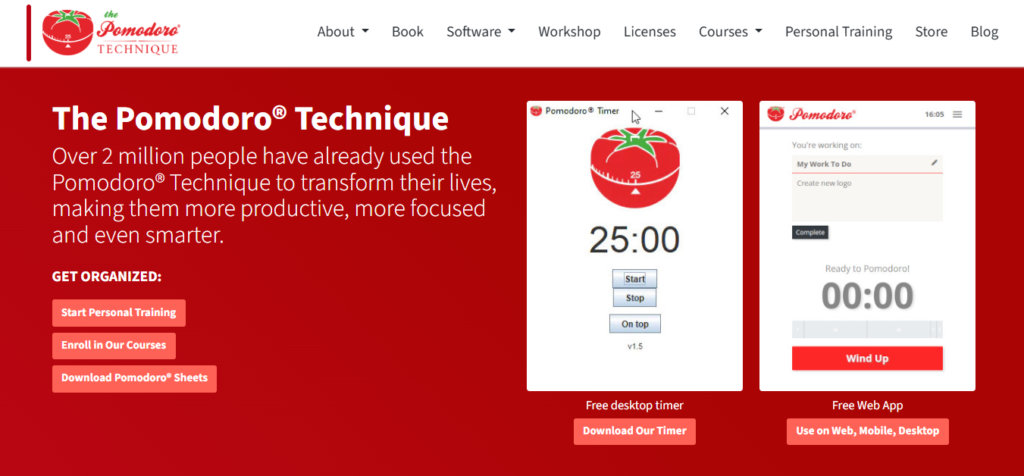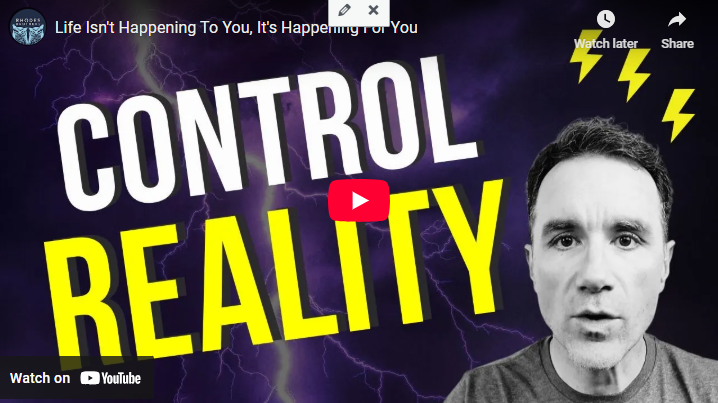For More Free Videos, Subscribe to the Rhodes Brothers YouTube Channel.
“Focus is a matter of deciding what things you’re not going to do.” – John S. Rhodes, Rhodes Brothers

In today’s world of endless distractions, staying focused can feel like an impossible task. Social media notifications, emails, meetings that could’ve been emails—it’s a lot. But what if I told you that improving your focus is much simpler than you think?
The secret lies in one powerful principle: the 80/20 Focus Rule. This rule doesn’t just promise better focus—it’s about maximizing the impact of your time and energy by focusing on the 20% of activities that deliver 80% of the results.
John S. Rhodes of the Rhodes Brothers puts it perfectly: “If you can’t control something in the outside world, it doesn’t deserve your attention.” The 80/20 Focus Rule is all about controlling what you can, minimizing what you can’t, and putting your attention where it truly matters.
In this post, we’ll break down how to use this rule to fix your attention, improve your focus, and ultimately, transform your productivity. Whether you’re struggling with distractions, drowning in tasks, or simply looking to work smarter, not harder—this guide is for you.
TL;DR
- Zero Control = Low Attention: Don’t waste energy on things you can’t control.
- Low Control = Medium Attention: Focus only enough to manage impactful outcomes.
- High Control = High Attention: Prioritize what you control and what has a direct impact on your life.
- Leverage the 80/20 Principle: Identify the 20% of tasks that create 80% of your results and double down on them.
- Tools and Strategies Included: Learn actionable steps to apply this principle to work, personal life, and beyond.
The 80/20 Focus Rule: A Step-by-Step Guide
Let’s dive deeper into how you can apply the 80/20 Focus Rule in your life. By focusing on what you can control, prioritizing high-impact tasks, and leveraging small wins, you can dramatically improve your productivity, attention, and outcomes. Below, we’ll break down each step with actionable advice, real-world examples, and expert tools to help you succeed.
-
Start with What You Can Control
The first and most critical step in applying the 80/20 Focus Rule is understanding your level of control in any given situation. As John S. Rhodes explains, this comes down to three categories:
- Zero Control: These are situations where you have no influence whatsoever, such as the results of a national election or the weather. Worrying about them only drains your energy with no return.
- Low Control: In these scenarios, you have some influence, but it’s limited. For example, investing in the stock market gives you control over your portfolio, but not over market trends.
- High Control: Here, you have direct influence. Think of decisions like adjusting your freelance rates, planning your daily schedule, or choosing what projects to work on.
Action Step:
- Write down three things that are stressing you out right now. Next to each, label them as “zero control,” “low control,” or “high control.”
- For zero control: Stop giving these items your attention.
- For low control: Set boundaries and focus only on the actions you can take.
- For high control: Prioritize these tasks and take decisive action.
Example:
Imagine you’re feeling anxious about the economy (zero control). Instead of fixating on news reports, redirect your focus to building an emergency savings fund (high control). By concentrating on what you can control, you’ll feel empowered and productive rather than overwhelmed.
-
Prioritize High-Control, High-Impact Activities
The 80/20 Focus Rule is all about making the most of your time and energy by concentrating on tasks that offer the highest return on investment. These are your high-control, high-impact activities, where your actions directly lead to meaningful results.
Why This Matters
A 2023 study revealed that the average professional wastes 31 hours per month on tasks that don’t contribute to their goals. That’s 370 hours annually—almost two full weeks! By identifying and prioritizing high-impact activities, you can reclaim a significant chunk of your time and use it effectively.
Steps to Prioritize
- Audit Your Weekly Tasks: Create a detailed list of everything you do in a typical week.
- Rank Tasks by Control and Impact: Categorize each task into one of these four groups:
- High Control, High Impact: Focus here first (e.g., learning a career-advancing skill).
- High Control, Low Impact: Manage these tasks efficiently (e.g., organizing your workspace).
- Low Control, High Impact: Monitor these but don’t overcommit (e.g., stock market performance).
- Low Control, Low Impact: Eliminate or delegate these tasks (e.g., scrolling social media).
Tool to Try:

Use a time-blocking app like Trello or Notion to schedule your high-control tasks during your most productive hours.
-
Avoid the Common Pitfalls of Low-Control Activities
One of the biggest mistakes people make is focusing too much on low-control activities. These are the time-sucking distractions that provide little to no payoff, like endlessly scrolling through news feeds or arguing about politics online.
What to Avoid
- Doomscrolling news cycles: Staying informed is important, but obsessing over things you can’t change is counterproductive.
- Unproductive debates: Whether online or in person, these usually waste time without resolving anything.
- Worrying about external factors: Stressing over things outside your control only drains your mental energy.
Alternative Focus Areas
Instead of wasting energy on low-control activities, redirect your attention to areas where you can make a tangible difference. For example, if you’re frustrated by national policies (zero control), consider volunteering for a local initiative where your efforts can have a real impact.
-
Leverage the Power of Small Wins
In high-control situations, even small actions can lead to significant results. This is especially true when it comes to personal and professional growth.
Why Small Wins Matter
Research published in the Harvard Business Review found that achieving small, incremental goals boosts motivation and builds momentum toward larger objectives.
Steps to Get Started
- Audit Your High-Control Activities: Identify tasks where your actions have a direct impact.
- Example: Freelancers can evaluate their rates to ensure they’re competitive.
- Set a Small, Actionable Goal: Break larger tasks into manageable steps.
- Example: Increase your freelance rate by 10% this month.
- Track Your Progress: Use tools to measure the impact of your actions.
- Example: Use Harvest or QuickBooks to track additional revenue from your rate increase.
Quote to Inspire You:
“Success is the sum of small efforts, repeated day in and day out.” – Robert Collier
-
Use Tools to Enhance Your Focus
Technology often gets blamed for distracting us, but it can also be a powerful ally in improving focus—if you use it wisely.
Top Tools to Try
- Freedom App: Blocks distracting websites and apps, allowing you to focus on what matters.
- RescueTime: Tracks how you spend your time and provides insights to help you optimize your day.
- Focus@Will: Plays scientifically designed music to improve concentration and productivity.

Pro Tip: Use these tools in combination with the Pomodoro Technique (25-minute work sprints) to maximize your focus.
-
Build Habits That Reinforce Focus
Building habits around your high-control, high-impact activities ensures that they become a natural part of your routine. Over time, these habits will help you sustain focus and productivity without constant effort.
Steps to Build Focused Habits
- Start Small: Choose one task to focus on daily for just 30 minutes.
- Use the Pomodoro Technique: Work in 25-minute intervals, followed by 5-minute breaks.
- Eliminate Distractions: Turn off notifications or use apps like Forest to stay focused.
- Track Progress: Use a habit tracker app like Habitica to gamify your progress and stay motivated.
Pro Tip: Pair your habit-building efforts with a reward system. For example, treat yourself to a favorite snack or activity after completing your focused work session.
-
Profit from Focus: The 80/20 Business Mindset
Did you know that applying the 80/20 Focus Rule can directly boost your income? By zeroing in on the 20% of activities that generate 80% of your revenue, you can streamline your efforts and maximize your profits.
Examples of Focused Profit Strategies
- For Entrepreneurs: Concentrate on your top-performing products or services.
- For Freelancers: Dedicate more time to pitching high-paying clients instead of chasing low-value gigs.
- For Employees: Focus on tasks that directly impact performance reviews, promotions, or bonuses.
Tool to Try

Use Google Analytics or HubSpot to identify which products, services, or clients bring in the most revenue. Once you know where your efforts pay off, double down on those areas.
By following these seven steps, you’ll not only improve your focus but also see tangible results in your productivity and overall success. Remember, the key is to focus on what you can control, prioritize high-impact activities, and leverage the power of small wins to build momentum.
Actionable Steps to Apply the 80/20 Focus Rule
To apply the 80/20 Focus Rule effectively, start by tailoring your approach to your specific situation and experience level.
Regardless of your background, the key is to identify high-impact, high-control activities and focus your energy there. For beginners or those overwhelmed by distractions, the first step is to simplify. Begin by creating a list of all your current tasks and responsibilities. Next, categorize each task based on its level of control (zero, low, or high) and its impact on your goals. Eliminate or minimize zero-control tasks, such as worrying about external events you can’t influence, and set boundaries for low-control tasks. For high-control, high-impact tasks, devote your prime working hours to them to maximize your focus and results.
For professionals or experienced individuals, the strategy shifts towards optimizing existing systems. Identify the 20% of tasks that generate 80% of your results, whether it’s client acquisition, project execution, or business growth activities. Use tools like time-blocking apps or project management platforms, such as Trello or Asana, to schedule these tasks during periods when your energy and focus are at their peak. For instance, if you’re a freelancer, focus on pitching high-paying clients or delivering quality work instead of overloading your schedule with low-paying gigs.
For students or those balancing multiple priorities, the key is to combine focus with flexibility. Use techniques like the Pomodoro Technique to work in short bursts of 25 minutes, followed by quick breaks. This method helps to maintain focus while avoiding burnout. Additionally, incorporate tools like Freedom or Forest to block distractions during study sessions. Focus on coursework or assignments that carry the highest weight toward your grade (high control, high impact), and let go of minor tasks that don’t significantly affect your overall performance.
For retirees or those nearing retirement, the focus should shift toward personal goals and projects that bring fulfillment. Identify areas where you have the most control, such as organizing finances, managing investments, or engaging in hobbies. For instance, if you’re managing your retirement portfolio, prioritize regular reviews of high-impact investment decisions while minimizing time spent worrying about market fluctuations you can’t control.
No matter your demographic, the foundation of the 80/20 Focus Rule remains the same: focus on what you can control, prioritize what has the greatest impact, and eliminate unnecessary distractions. By tailoring these practical steps to your unique situation, you’ll not only improve your focus but also achieve more meaningful outcomes in your personal and professional life.
Common Mistakes to Avoid When Applying the 80/20 Focus Rule
Even with the best intentions, it’s easy to fall into certain traps that can derail your efforts to focus effectively. Whether it’s wasting energy on the wrong things or pushing yourself too hard, these mistakes can undo even the most carefully crafted plans. Below, we’ll dive deeper into the four most common mistakes people make and how to avoid them.
Trying to Control the Uncontrollable
One of the biggest focus traps is spending too much time and energy on things that are completely outside your control. Whether it’s worrying about global events, fretting over other people’s actions, or obsessing about the outcome of situations beyond your influence, this habit drains your mental energy without offering any tangible results. For example, constant anxiety about the economy or political debates often leads to frustration rather than solutions.
Why This Happens:
Our brains are wired to seek control, and focusing on external issues can feel like we’re “doing something” about them. However, this is an illusion. By fixating on what you can’t change, you’re robbing yourself of the ability to focus on areas where your actions truly matter.
How to Avoid This:
- Shift Your Perspective: Ask yourself, Am I focusing on something I can directly influence? If the answer is no, consciously redirect your energy to something actionable.
- Reframe Your Thinking: Instead of worrying about a stock market downturn, focus on what you can control, like creating a diversified portfolio or increasing your savings rate.
- Set Boundaries: Limit your exposure to things that fuel this mistake, such as excessive news consumption or unproductive social media debates.
Pro Tip: Practice the “Circle of Control” exercise. Draw a circle and list everything within your control inside it (e.g., your habits, decisions, and priorities). Outside the circle, list what you can’t control (e.g., global events or other people’s behavior). Focus only on what’s inside.
Overloading Your Plate
Another major mistake is trying to do too much at once. Many people feel obligated to tackle every task that comes their way, believing that more work equals more productivity. In reality, juggling too many tasks leads to diminished focus, lower-quality results, and eventually, burnout. Overloading your plate often stems from an inability to say no or a fear of missing out on opportunities.
Why This Happens:
We live in a culture that glorifies busyness, equating it with success. However, spreading yourself thin across too many projects or responsibilities means you’re never fully present for any of them. This not only reduces your effectiveness but also leaves you feeling overwhelmed, constantly chasing your to-do list.
How to Avoid This:
- Prioritize Ruthlessly: Use the 80/20 Focus Rule to identify the 20% of tasks that produce 80% of your results. Focus your time and energy on these high-impact tasks, and let go of or delegate the rest.
- Set Clear Boundaries: Learn to say no to tasks, projects, or commitments that don’t align with your priorities. For example, if you’re already juggling multiple deadlines, it’s okay to decline additional responsibilities.
- Batch Your Tasks: Group similar tasks together to minimize context-switching. For example, dedicate one hour to responding to emails instead of checking your inbox throughout the day.
Example: Instead of trying to complete five projects simultaneously, commit to finishing one high-priority task before moving on to the next. This approach not only improves the quality of your work but also gives you a sense of accomplishment and reduces stress.
Ignoring Self-Care
Burnout is one of the most common—and preventable—consequences of poor focus management. When you neglect self-care, you compromise your ability to concentrate, make decisions, and perform at your best. Skipping breaks, sacrificing sleep, or overworking yourself might seem productive in the short term, but it inevitably leads to exhaustion, reduced focus, and diminishing returns.
Why This Happens:
Many people feel guilty about taking breaks or prioritizing self-care, thinking it’s a luxury they can’t afford. Others simply underestimate the importance of rest and recharge in sustaining long-term productivity.
How to Avoid This:
- Schedule Regular Breaks: Incorporate short breaks into your workday to recharge. For instance, use the Pomodoro Technique to work in 25-minute intervals, followed by 5-minute breaks.
- Prioritize Sleep: Studies show that adults need 7–8 hours of sleep per night to maintain focus, memory, and decision-making skills. Make sleep a non-negotiable priority.
- Engage in Active Self-Care: Take time for activities that replenish your energy, such as exercising, meditating, or spending time with loved ones.
Pro Tip: Remember that self-care isn’t selfish—it’s essential. Think of it this way: you can’t pour from an empty cup. Taking care of yourself ensures you have the energy and clarity to focus on what matters most.
Chasing Perfection
Perhaps the most subtle yet damaging mistake is getting caught in the perfectionism trap. While striving for excellence is admirable, perfectionism often results in procrastination, overanalyzing minor details, and an inability to complete tasks. Instead of focusing on progress, perfectionists spend excessive time refining work that’s already good enough, which delays outcomes and creates unnecessary stress.
Why This Happens:
Perfectionism is often rooted in fear—fear of failure, criticism, or not being “good enough.” This fear drives people to overcompensate by trying to perfect every aspect of their work, even when it’s not necessary.
How to Avoid This:
- Adopt a Progress-Over-Perfection Mindset: Remind yourself that progress is more valuable than perfection. Focus on completing tasks rather than perfecting them.
- Set Time Limits: Give yourself a specific amount of time to complete a task, and stick to it. For example, commit to spending no more than two hours drafting a report.
- Embrace Iteration: Understand that improvement happens over time. It’s better to deliver a “good enough” version now and refine it later than to delay indefinitely.
Example: Instead of spending hours tweaking the font size on a presentation, focus on delivering clear, impactful content. Remember, your audience values substance over perfection.
By understanding and avoiding these four common mistakes, you’ll be better equipped to apply the 80/20 Focus Rule effectively. Focus on what you can control, prioritize fewer high-impact tasks, take care of your well-being, and let go of perfectionism. These adjustments will not only enhance your focus but also improve your overall productivity and satisfaction.
Frequently Asked Questions
What is the 80/20 Focus Rule?
The 80/20 Focus Rule states that 80% of your results come from 20% of your efforts. By identifying and focusing on the most impactful tasks, you can maximize productivity and minimize wasted energy.
How do I identify high-impact tasks?
Start by listing all your tasks. Rank them based on their potential to create significant outcomes in your life or work.
What tools can help me focus better?
Tools like Freedom, RescueTime, and Focus@Will are excellent for blocking distractions and boosting productivity.
How does focus impact productivity?
According to a 2024 study, people who focus on high-impact tasks are 30% more productive than those who multitask.
Can the 80/20 rule apply to personal life?
Absolutely! For instance, focus on quality time with loved ones (20%) that strengthens 80% of your relationships.
How do I avoid distractions?
Turn off notifications, block distracting apps, and use productivity techniques like Pomodoro.
What’s the best way to start implementing this rule?
Start small. Identify one high-control, high-impact task and commit to focusing on it daily.
How do I measure my progress?
Use tools like time trackers, habit trackers, or analytics platforms to monitor your results.
Is multitasking bad for focus?
Yes, studies show that multitasking reduces productivity by up to 40%.
How long does it take to build focused habits?
Research suggests it takes 21-66 days to form a new habit, depending on its complexity.
Unlock the Power of Focus and Achieve Your Goals
The 80/20 Focus Rule is a game-changer when it comes to improving focus, boosting productivity, and achieving meaningful results. By identifying the 20% of activities that generate 80% of your outcomes, you can streamline your efforts and eliminate distractions that waste time and energy.
To recap, here are the actionable tips you can start implementing today:
- Focus on What You Can Control: Stop wasting energy on things outside your influence and prioritize high-control, high-impact tasks.
- Prioritize High-Impact Activities: Use time-blocking or categorization techniques to ensure you’re spending your time on what matters most.
- Avoid Common Pitfalls: Let go of perfectionism, don’t overload your plate, prioritize self-care, and avoid multitasking distractions.
- Leverage Tools and Techniques: Use apps like Freedom, RescueTime, and Forest to enhance your focus and productivity.
- Build Habits That Stick: Establish daily routines that reinforce high-control, high-impact tasks and celebrate small wins along the way.
- Take Action Today: Start by identifying three tasks you can control and rank them by impact. Then, commit to spending at least 30 minutes on your top-priority task. Small, consistent steps lead to big results!
For more insights, practical advice, and strategies to help you succeed, subscribe to the Rhodes Brothers YouTube Channel for the latest videos and updates. Together, let’s unlock your potential and achieve your goals!
Resource List
To help you continue your journey toward better focus and productivity, here’s a comprehensive list of resources—tools, books, blogs, and courses—that will support your learning and implementation:
Books
- The 80/20 Principle: The Secret to Achieving More with Less by Richard Koch
- Deep Work: Rules for Focused Success in a Distracted World by Cal Newport
- Atomic Habits: An Easy & Proven Way to Build Good Habits & Break Bad Ones by James Clear
- Essentialism: The Disciplined Pursuit of Less by Greg McKeown
- Make Time: How to Focus on What Matters Every Day by Jake Knapp and John Zeratsky
Podcasts
- The Tim Ferriss Show – Productivity hacks and interviews with high achievers.
- The Productivity Show by Asian Efficiency – Practical tips for time management and focus.
- Deep Questions with Cal Newport – Insights on deep work and digital minimalism.
- The Mindset Mentor by Rob Dial – Motivation and strategies for mental focus.
Blogs & Articles
- JamesClear.com – Tips on habits, focus, and productivity.
- Zen Habits by Leo Babauta – Minimalism and mindfulness strategies.
Tools
- Freedom: Block distracting websites and apps to stay focused.
- RescueTime: Analyze and optimize how you spend your time.
- Trello or Notion: Organize and prioritize tasks effectively.
- Focus@Will: Music scientifically designed to boost concentration.
- Forest: A gamified app to help you stay away from your phone.
Courses
- Focus Mastery: Focus 100% on What Matters (available on Udemy)
Videos and Channels
- Rhodes Brothers YouTube Channel – Actionable advice on focus, productivity, and success strategies.
- How to Gain Control of Your Free Time by Laura Vanderkam
- The Power of Time Off by Stefan Sagmeister
Apps for Habit-Building and Time Management





